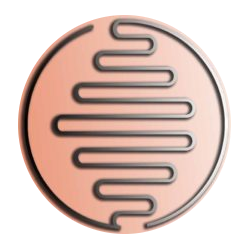Un articolo pubblicato nel 2013 sulla prestigiosa rivista Journal of clinical Oncology da Linda Carlson e colleghi descrive un ampio studio randomizzato caso-controllo che in Canada, a Calgary, ha coinvolto 271 donne che a seguito delle cure per carcinoma al seno presentavano disagio e sintomi di stress; un programma in otto settimane di Mindfulness e Yoga leggero si è dimostrato capace di ridurre in modo significativo sintomi di disagio psicologico (ansia, tristezza, rabbia etc) e sintomi di stress tendendo anche a migliorare i ritmi diurni del cortisolo (principale ormone dello stress). Questo programma (chiamato Mindfulness-Based Cancer Recovery) è risultato per molti aspetti più efficace delle terapie psicologiche di gruppo a carattere espressivo/supportivo.
Versione integrale dell’articolo è disponibile alla pagina: http://jco.ascopubs.org/content/31/25/3119.long
Abstract:
J Clin Oncol. 2013 Sep 1;31(25):3119-26. doi: 10.1200/JCO.2012.47.5210. Epub 2013 Aug 5.
Randomized controlled trial of Mindfulness-based cancer recovery versus supportive expressive group therapyfor distressed survivors of breast cancer.
Carlson LE1, Doll R, Stephen J, Faris P, Tamagawa R, Drysdale E, Speca M.
J Clin Oncol. 2014 Nov 10;32(32):3686-7.
PURPOSE:
To compare the efficacy of the following two empirically supported group interventions to help distressed survivors of breast cancer cope:mindfulness-based cancer recovery (MBCR) and supportive-expressive group therapy (SET).
PATIENTS AND METHODS:
This multisite, randomized controlled trial assigned 271 distressed survivors of stage I to III breast cancer to MBCR, SET, or a 1-day stress management control condition. MBCR focused on training in mindfulness meditation and gentle yoga, whereas SET focused on emotional expression and group support. Both intervention groups included 18 hours of professional contact. Measures were collected at baseline and after intervention by assessors blind to study condition. Primary outcome measures were mood and diurnal salivary cortisol slopes. Secondary outcomes were stress symptoms, quality of life, and social support.
RESULTS:
Using linear mixed-effects models, in intent-to-treat analyses, cortisol slopes were maintained over time in both SET (P = .002) and MBCR (P = .011) groups relative to the control group, whose cortisol slopes became flatter. Women in MBCR improved more over time on stress symptoms compared with women in both the SET (P = .009) and control (P = .024) groups. Per-protocol analyses showed greater improvements in the MBCR group in quality of life compared with the control group (P = .005) and in social support compared with the SET group (P = .012).
CONCLUSION:
In the largest trial to date, MBCR was superior for improving stress levels, quality of life and social support [CORRECTED] fordistressed survivors of breast cancer. Both SET and MBCR also resulted in more normative diurnal cortisol profiles than the control condition. The clinical implications of this finding require further investigation.

